Papers by Yuki Tanaka-McFarlane
Exploring a Heritage Language: Linguistic Ideologies, Identity, and Revitalization of Miyako
PsycEXTRA Dataset
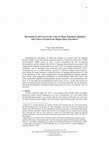
Texas Linguistics Forum, 2016
Rethinking the importance of sound and emotion is a crucial locus for thinking through cultural v... more Rethinking the importance of sound and emotion is a crucial locus for thinking through cultural voices and silences carried in narratives. Inspired by Silverstein (1998b) and Kroskrity's (2009) notion of " sites, " I have reconsidered the role of language documentation and the moments that the act of language documentation can produce, and suggested that language documentation can create " sites " of linguistic transaction, of self recognition, and of ideological and emotional stance shift (Tanaka-McFarlane, 2015). Examining the use of sound symbolic utterances in Belizean Mopan Maya 2 speakers' story-telling, this paper attempts to extend this notion of language documentation as " sites " to the discussion of the sound suggestiveness through phonological iconicity (Barrett, 2014, 2016), of the imaginative possibilities via sound (Webster, 2009, 2014, 2015), and of the emotionally signified and ideologically silenced ancestors' voices and identities. My focus is on the usage of an onomatopoeic lexical item, ch'oyoy 'cicada' that reveals not only its grammatical and structural function as a lexicalized sound but also its emotional, historical and imaginative semanticity that connects the call of ajch'oyoy and the voices of ancestors.
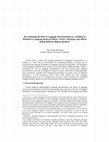
SALSA XXIII Proceedings (2014, Vol. 58)
In this article, I explore the possible application of language documentation as a medium, or a “... more In this article, I explore the possible application of language documentation as a medium, or a “site,” that can intermediate two contrasting principles or beings, such as researchers and language consultants, or language ideologies and speakers’ felt attachment to their language. Inspired by the notion of “sites (Silverstein, 1998b; Kroskrity, 2009),” I reconsider the role of language documentation and the moment that language documentation can create. Treating this moment as a place where those contrasting beings meet and interact, I propose that language documentation can create “sites” of linguistic transaction, of self recognition, and of stance shift. Within this “site,” language documentation can serve as a medium that can erase a border between two contrasting beings and enable speakers to start self-motivated and self-engaging language renewal.
Yuki Tanaka is a PhD student of linguistic anthropology at Southern Illinois University, Carbonda... more Yuki Tanaka is a PhD student of linguistic anthropology at Southern Illinois University, Carbondale. Her research focuses on the interrelationships of language and culture, language ideologies, language shift and documentation, language maintenance and revitalization, identity, and the affect, with an areal focus on the lowland Maya. Currently, she is working on the documentation of Belizean Mopan spoken in Toledo district, Southern Belize. As a heritage speaker, she is also interested in documentation and revitalization of Miyako, a Ryukyuan language spoken in the Miyako Island, Japan. She holds an MA in Anthropology from SIUC and a BA in History from Ibaraki University, Japan. At SIUC, she has taught introductory linguistic anthropology and Japanese classes as an instructor of record and introductory anthropology classes as a TA.
Book Reviews by Yuki Tanaka-McFarlane
Thesis by Yuki Tanaka-McFarlane
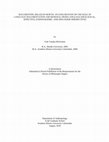
This dissertation explores the nature, purpose, function and role of language documentation ... more This dissertation explores the nature, purpose, function and role of language documentation in order to further our understanding of mechanisms of language transmission and maintenance in the face of language endangerment and the repression of indigenous identity. Beyond its traditional use for generating linguistic data, I argue that the act and the process of language documentation can be understood as a comprehensive means to evaluate the interactions between speakers and researchers and as the stage where various beliefs and emotions are displayed. Extending the notion of “sites” developed by Silverstein (1998) and Kroskrity (2009), I argue that the act of language documentation can create “sites” of linguistic transaction, of self recognition, and of ideological and emotional stance shift.
To attain this goal, this project linguistically and ethnographically documents and describes Belizean Mopan, an endangered Mayan language spoken in the southern Petén region of Guatemala and in the Maya Mountain region (Toledo District) of Southern Belize as a case study. Ethnographic and linguistic observation suggest that characteristics of Belizean Mopan do not simply stem from its linguistic features but rather are derived from ethnic complexity, language ideologies, identity politics, the history of Belize and speakers’ awareness of the self. Linguistic biographies, interviews, participant observation, and ethnographic accounts indicate that the individual’s emotional attachments to the language and the sense of belonging to one’s linguistic community are crucial keys for effective language documentation and revitalization. Discourse and grammatical analysis of sound symbolic words in narratives suggest that speakers’ linguistic affects can be evoked through sound itself. The devices used during language documentation, such as voice and video recorders can be understood as “signifying instruments” (J. D. Hill 2014), which amplify or evoke speakers’ and researchers’ linguistic ideologies and/or affects.
Tzik ‘respect’ plays a pivotal role in distinguishing Mopans from other Maya groups and many stories and personal narratives either explicitly or subtly demonstrate the concept and importance of tzik for regulating and maintaining the traditional community and for having a successful life, which resembles the secretos ‘secrets’ described in Hofling’s (1996: 109) account of Itzaj Maya lives. Focusing on tzik gained through being a ch’ija’an kristiyanojo ‘the grown-up people’, I argue that storytelling is a primary device to transmit and circulate traditional knowledge, worldview, ideologies and memories of Maya people from the present, the immediate past, and the mythological past and that in a sense, the role and meaning of dream divinations and my language consultant, Orlando Sho’s musical performances can be equated with the practice of storytelling. The act of language documentation is a portal to the site of linguistic and cultural transaction and of world learning, in which I see a key to successful language renewal and revitalization.
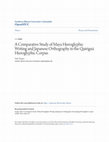
writing, comparing it with Japanese writing, both of which use logo-syllabograms. The central aim... more writing, comparing it with Japanese writing, both of which use logo-syllabograms. The central aim is to suggest a new perspective that will contribute to building testable theories for Mayan hieroglyphic spelling rules. Two research questions addressed here are: 1) how does the ancient Maya spelling system work; and 2) what is the motivation behind the ancient Mayan people's choice and use of CV syllabograms and logo-syllabic writing. I will investigate these questions from the following perspectives: 1) linguistic approaches to logo-syllabic writing systems; 2) phonetics; 3) a native Japanese speaker's intuition; 4) relationships between spoken and written languages. By using linguistic theories and methods with anthropological comparative methods, I propose the hypothesis that a word-final vowel in Maya hieroglyphic writing represents either an echo-vowel, a part of grammatical morpheme, a paragogic vowel accounting for wordfinal syllabification, or an underspelled word-final consonant. ii ACKNOWLEDGMENTS This thesis could not have been accomplished without the guidance and support of so many people. First and the foremost, I would like to thank my advisor, Dr. Charles Andrew Hofling, for his advice, support, and guidance. He has played a significant role in my academic development and has given me consistent help since the very first day in the graduate school. His profound knowledge of linguistics, Mayan languages and Mayan hieroglyphic writing have been invaluable resources throughout this process. I am especially grateful to him for reading over numerous drafts of this thesis and providing valuable feedback. I thank my committee, Dr. Anthony Webster, who also has given me great advice which inspired me and guided me to approach the issues from different perspectives. I am very grateful to Dr. Webster for cultivating my interest in verbal art and cultural relativity. I also thank Dr. Prudence Rice for her help, guidance and deep knowledge in Mayan archaeology that have been very beneficial. I am also grateful to the support staff and faculty in the Department of Anthropology at Southern Illinois University Carbondale. The secretaries, Becki Bondi and Tedi Thomas, have been very helpful and supportive. I am very appreciative of Dr.
Translation by Yuki Tanaka-McFarlane
Magic Lantern Gazette, 2019
The New Magic Lantern Journal 11(6), Sep 2013
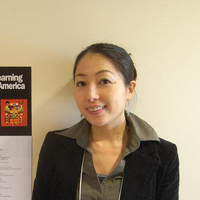


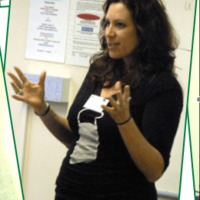




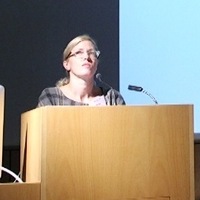

Uploads
Papers by Yuki Tanaka-McFarlane
Book Reviews by Yuki Tanaka-McFarlane
Thesis by Yuki Tanaka-McFarlane
To attain this goal, this project linguistically and ethnographically documents and describes Belizean Mopan, an endangered Mayan language spoken in the southern Petén region of Guatemala and in the Maya Mountain region (Toledo District) of Southern Belize as a case study. Ethnographic and linguistic observation suggest that characteristics of Belizean Mopan do not simply stem from its linguistic features but rather are derived from ethnic complexity, language ideologies, identity politics, the history of Belize and speakers’ awareness of the self. Linguistic biographies, interviews, participant observation, and ethnographic accounts indicate that the individual’s emotional attachments to the language and the sense of belonging to one’s linguistic community are crucial keys for effective language documentation and revitalization. Discourse and grammatical analysis of sound symbolic words in narratives suggest that speakers’ linguistic affects can be evoked through sound itself. The devices used during language documentation, such as voice and video recorders can be understood as “signifying instruments” (J. D. Hill 2014), which amplify or evoke speakers’ and researchers’ linguistic ideologies and/or affects.
Tzik ‘respect’ plays a pivotal role in distinguishing Mopans from other Maya groups and many stories and personal narratives either explicitly or subtly demonstrate the concept and importance of tzik for regulating and maintaining the traditional community and for having a successful life, which resembles the secretos ‘secrets’ described in Hofling’s (1996: 109) account of Itzaj Maya lives. Focusing on tzik gained through being a ch’ija’an kristiyanojo ‘the grown-up people’, I argue that storytelling is a primary device to transmit and circulate traditional knowledge, worldview, ideologies and memories of Maya people from the present, the immediate past, and the mythological past and that in a sense, the role and meaning of dream divinations and my language consultant, Orlando Sho’s musical performances can be equated with the practice of storytelling. The act of language documentation is a portal to the site of linguistic and cultural transaction and of world learning, in which I see a key to successful language renewal and revitalization.
Translation by Yuki Tanaka-McFarlane
To attain this goal, this project linguistically and ethnographically documents and describes Belizean Mopan, an endangered Mayan language spoken in the southern Petén region of Guatemala and in the Maya Mountain region (Toledo District) of Southern Belize as a case study. Ethnographic and linguistic observation suggest that characteristics of Belizean Mopan do not simply stem from its linguistic features but rather are derived from ethnic complexity, language ideologies, identity politics, the history of Belize and speakers’ awareness of the self. Linguistic biographies, interviews, participant observation, and ethnographic accounts indicate that the individual’s emotional attachments to the language and the sense of belonging to one’s linguistic community are crucial keys for effective language documentation and revitalization. Discourse and grammatical analysis of sound symbolic words in narratives suggest that speakers’ linguistic affects can be evoked through sound itself. The devices used during language documentation, such as voice and video recorders can be understood as “signifying instruments” (J. D. Hill 2014), which amplify or evoke speakers’ and researchers’ linguistic ideologies and/or affects.
Tzik ‘respect’ plays a pivotal role in distinguishing Mopans from other Maya groups and many stories and personal narratives either explicitly or subtly demonstrate the concept and importance of tzik for regulating and maintaining the traditional community and for having a successful life, which resembles the secretos ‘secrets’ described in Hofling’s (1996: 109) account of Itzaj Maya lives. Focusing on tzik gained through being a ch’ija’an kristiyanojo ‘the grown-up people’, I argue that storytelling is a primary device to transmit and circulate traditional knowledge, worldview, ideologies and memories of Maya people from the present, the immediate past, and the mythological past and that in a sense, the role and meaning of dream divinations and my language consultant, Orlando Sho’s musical performances can be equated with the practice of storytelling. The act of language documentation is a portal to the site of linguistic and cultural transaction and of world learning, in which I see a key to successful language renewal and revitalization.